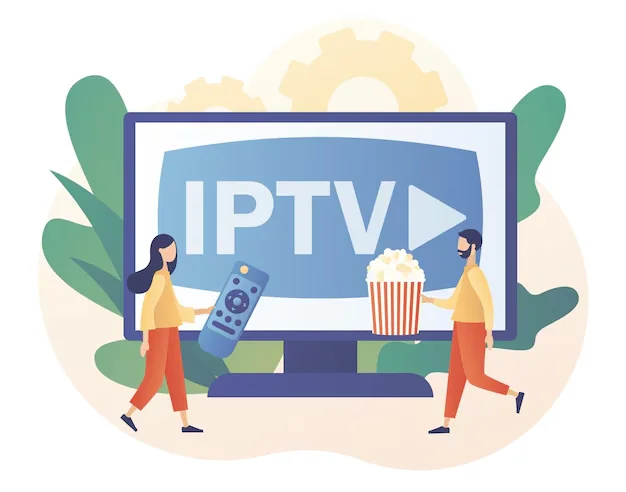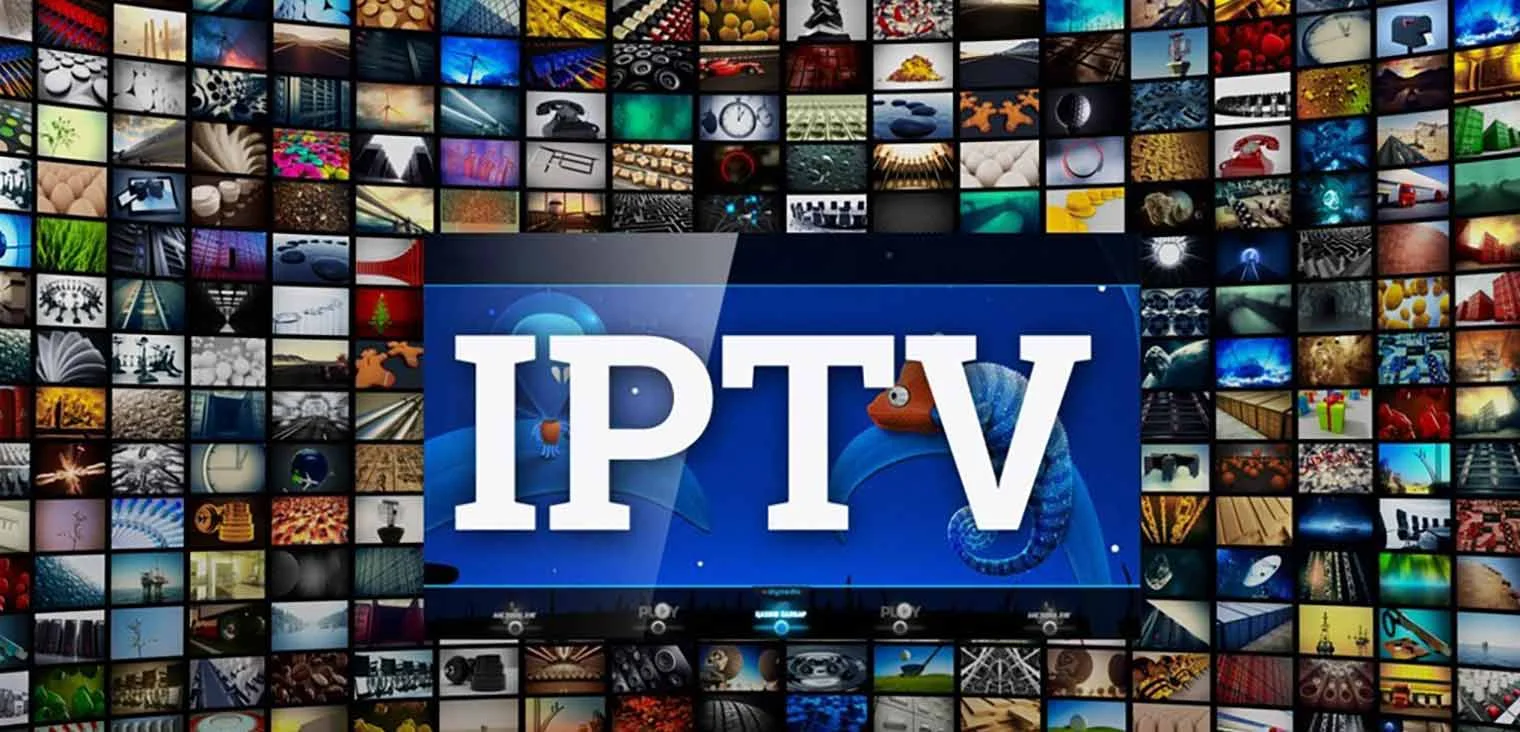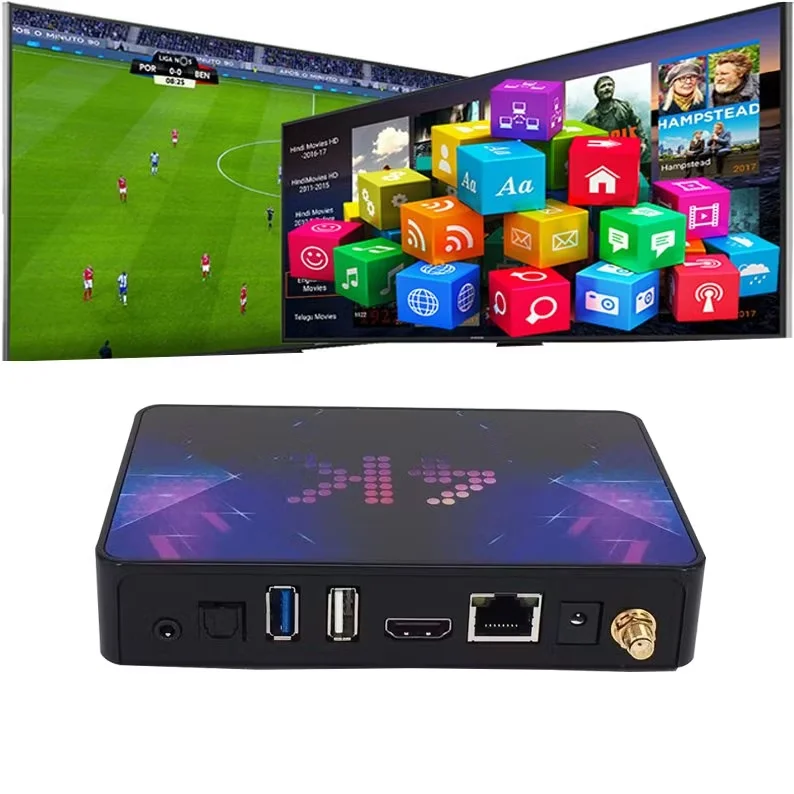What Exactly *Is* IPTV Bandwidth, and Why Should You Care?
Let’s start with the basics. What even *is* bandwidth when we talk about IPTV? Think of your internet connection like a pipe. Bandwidth is essentially the width of that pipe – it determines how much data can flow through it at any given time. When you’re streaming IPTV (Internet Protocol Television), you’re essentially downloading a continuous stream of video and audio data. The higher the quality of the video (think Standard Definition vs. High Definition vs. 4K Ultra HD), the more data needs to flow through that pipe simultaneously.
So, IPTV bandwidth refers specifically to the amount of internet speed (measured in megabits per second, or Mbps) required to smoothly stream television content over your internet connection without those annoying interruptions like buffering or pixelation. Why should you care? Well, imagine trying to watch the final moments of a crucial sports game, or the climax of a movie, only to have the screen freeze or turn into a blocky mess. That’s often a sign that your internet connection doesn’t have enough bandwidth to keep up with the demands of the stream. It’s the digital equivalent of trying to drink a thick milkshake through a tiny coffee stirrer – frustrating and ultimately unsatisfying.
Understanding your bandwidth needs is crucial for a good viewing experience. If your available bandwidth is too low, the IPTV stream will constantly pause to “catch up” (buffering), the picture quality might drop significantly, or it might not even load at all. On the other hand, having significantly more bandwidth than needed won’t necessarily make the picture *better* than the source quality, but it ensures consistency and allows other devices in your household to use the internet simultaneously without interfering with your stream. Choosing the right IPTV service is important, but ensuring you have the bandwidth to support it is equally vital. Many providers, like iptv4cheap.com, offer various IPTV plans, but they all rely on your home internet connection performing adequately. Without sufficient bandwidth, even the best cheap IPTV service will struggle to deliver.

Furthermore, consider households with multiple users. What happens when someone starts streaming IPTV in the living room, another person is on a video call in the office, and kids are playing online games? Each activity consumes bandwidth. If your total bandwidth isn’t enough to cover all simultaneous activities, everyone’s experience suffers. This is where understanding not just the requirement for one stream, but your household’s total usage pattern becomes important. Some users might even opt for IPTV with multiple connections, allowing simultaneous streams on different devices, which further increases the demand on your internet pipe. Knowing your bandwidth helps you choose the right internet plan and potentially troubleshoot issues more effectively, ensuring everyone can enjoy their online activities, including high-quality IPTV streaming.
How Much Bandwidth Does IPTV *Actually* Use?
Alright, we know bandwidth is important, but how much do you *really* need for IPTV? The answer isn’t a single number; it varies significantly based primarily on the resolution you’re streaming.
Let’s break it down:
- Standard Definition (SD): SD streams are the least demanding. They typically require around 3-5 Mbps of dedicated bandwidth for a smooth experience. If you’re only watching SD content or have a slower internet plan, this might be sufficient, but honestly, most content and expectations today are higher.
- High Definition (HD – 720p/1080p): This is the most common streaming quality nowadays. For a consistent HD stream, you’ll want at least 5-10 Mbps. Many sources recommend leaning towards 10 Mbps or even slightly more per HD stream to be safe, especially for 1080p content, which is data-heavier than 720p.
- Ultra High Definition (UHD/4K): 4K offers stunning picture clarity but demands significantly more bandwidth. For a reliable 4K IPTV stream, you should aim for a minimum of 25 Mbps dedicated solely to that stream. Some providers or streams might even push closer to 30 Mbps or more. If you have a 4K TV and want to take full advantage of high-quality IPTV subscriptions, ensuring you have this level of speed is essential.
But wait, resolution isn’t the only factor, is it? No, several other things can influence bandwidth consumption. The compression technology used by the IPTV provider plays a role; more efficient codecs (like H.265/HEVC compared to H.264/AVC) can deliver similar quality at lower bitrates (and thus lower bandwidth usage). The frame rate (e.g., 60 frames per second vs. 30 fps) also impacts data usage, with higher frame rates requiring more bandwidth. Even the specific channel or content type can have varying bitrates. Live sports, with fast-moving action, often use higher bitrates than a static news channel, for example.

Crucially, these figures (like the 10 Mbps for HD or 25 Mbps for 4K) are *per stream*. If you plan on using multi-connection IPTV to watch on several devices simultaneously, you need to multiply the requirement. For instance, two simultaneous HD streams would ideally need 20 Mbps or more, plus additional bandwidth for any other internet activity in your home (browsing, gaming, smart home devices, etc.). It’s always wise to have a buffer. If the minimum recommended speed for 4K is 25 Mbps, having an internet plan that consistently delivers 35-50 Mbps or more provides headroom and ensures a smoother experience, especially during peak internet usage times in your neighborhood. When looking at IPTV pricing, factor in the potential need for a faster internet plan to support the quality you desire.
Why Does Bandwidth Matter So Much for IPTV Streaming Quality?
So we’ve established that different IPTV qualities need different amounts of bandwidth. But *why* does it make such a tangible difference to your viewing experience? What actually happens when the bandwidth isn’t quite up to snuff?
The most common and universally hated symptom of insufficient bandwidth is buffering. You know the drill: the picture freezes, often accompanied by a spinning circle or loading icon, while the device desperately tries to download enough upcoming video data to continue playing smoothly. This happens because the stream is consuming data faster than your internet connection can deliver it. The player builds up a small buffer (a cache of the next few seconds or minutes of video), but if the download speed can’t keep this buffer filled, playback has to pause until it refills. Constant buffering makes watching anything virtually impossible and is the number one frustration linked to inadequate IPTV bandwidth.
Another common issue is a sudden drop in picture quality. Have you ever been watching a crisp HD stream, and suddenly it looks blurry or pixelated, like an old YouTube video from 2005? Many IPTV apps and services use adaptive bitrate streaming. This technology cleverly detects if your available bandwidth is dropping and automatically switches to a lower-quality (lower-bandwidth) version of the stream to *avoid* buffering. While it’s better than constant freezing, it’s still a compromised experience. You might be paying for a high-definition IPTV channel subscription, but if your bandwidth fluctuates or is consistently low, you might find yourself watching in SD quality much of the time. This defeats the purpose of having a high-resolution TV and a premium subscription.

Furthermore, low bandwidth can lead to audio/video sync issues, where the sound doesn’t match the picture, or noticeable lag, especially during live events. Imagine the commentary describing a goal several seconds before you actually see it on screen – it ruins the excitement. Sometimes, severe bandwidth limitations can even cause the stream to fail entirely, kicking you back to the menu or displaying an error message. Think about it: the IPTV provider is sending a massive, continuous flow of data packets. If your connection can’t receive and process these packets quickly and reliably enough, the entire structure of the stream breaks down. This is why ensuring you meet or exceed the recommended bandwidth for your desired streaming quality isn’t just a suggestion; it’s fundamental to actually enjoying the service you’re paying for, whether it’s a one-month IPTV subscription or a yearly plan. Consistent, adequate bandwidth is the foundation upon which a positive IPTV experience is built.
Testing Your Internet Speed for IPTV: Are You Ready?
Okay, theory time is over. You understand that bandwidth is critical for IPTV, and you have a rough idea of the speeds needed for different resolutions. But how do you know what *your* actual internet speed is? You might be paying your Internet Service Provider (ISP) for a certain speed tier (e.g., “up to 100 Mbps”), but what speed are you genuinely getting at your device?
Running an internet speed test is simple, free, and essential. How do you do it? There are numerous reliable speed testing websites and apps available. Popular choices include Speedtest by Ookla, Fast.com (powered by Netflix), and Google’s own speed test (just search “internet speed test” on Google). Simply visit one of these sites or open the app on the device you plan to use for IPTV (or a device connected to the same network, preferably via Ethernet for the most accurate reading of your incoming speed), and click the “Go” or “Start” button. The test typically takes less than a minute.
What should you look for in the results? The test will usually show three key metrics:
- Download Speed (Mbps): This is the most crucial number for IPTV. It measures how quickly your device can pull data from the internet – exactly what happens when you’re streaming video. Compare this number to the recommendations (5-10 Mbps for HD, 25+ Mbps for 4K per stream).
- Upload Speed (Mbps): This measures how quickly you can send data *to* the internet. It’s less critical for streaming IPTV (which is mostly downloading) but important for things like video calls, online gaming, or uploading large files.
- Ping (Latency, measured in ms): Ping measures the reaction time of your connection – how quickly you get a response after sending out a request. Lower ping is better (ideally under 50ms, but even under 100ms is usually fine for streaming). High ping can sometimes contribute to lag, although bandwidth is the more common culprit for IPTV issues.

Should you run the test just once? It’s actually better to run tests multiple times, at different times of the day (e.g., morning, afternoon, evening peak hours). Internet speeds can fluctuate based on network congestion in your area or even within your own home. Testing at various times gives you a more realistic picture of the *consistent* speed you can expect. Also, test using the device you’ll primarily use for IPTV. Wi-Fi speeds can be significantly lower than wired (Ethernet) speeds, especially if you’re far from the router or have signal interference. If the speed test on your Smarters Firestick device via Wi-Fi shows much lower speeds than a test run on a computer connected directly to the router, it might indicate a Wi-Fi issue rather than a problem with your overall internet service. Understanding your real-world speeds is the first step towards ensuring you’re ready for a smooth IPTV experience or diagnosing why you might be having problems with your current IPTV subscription.
Minimum Recommended Speeds for Different IPTV Resolutions
Let’s get specific. We’ve talked about ranges, but what are the generally accepted *minimum* sustained speeds you should aim for to watch IPTV comfortably at various resolutions? Keep in mind these are guidelines – actual requirements can vary slightly based on the provider’s encoding and other factors, but these figures provide a solid baseline.
- Standard Definition (SD – typically 480p): Minimum 3 Mbps. Honestly, while 3 Mbps might technically work for a single SD stream, the experience might not be great, and it leaves zero room for any other internet activity. Most users will find this quality subpar on modern TVs anyway. Very few people actively seek out SD streams anymore unless bandwidth is severely limited. Think of 3-5 Mbps as the absolute floor.
- High Definition (HD – 720p): Minimum 5 Mbps. For 720p content, 5 Mbps is often cited as the minimum. It can provide a decent experience, but it’s cutting it fine. Any network fluctuation or slight increase in the stream’s bitrate could lead to buffering.
- High Definition (HD – 1080p): Minimum 8-10 Mbps. This is where most quality streaming happens today. While some sources might say 5-7 Mbps, a safer and more widely recommended minimum for smooth, consistent 1080p streaming is 8 Mbps, with 10 Mbps being a more comfortable target. This provides a small buffer for network variations and ensures a generally stable picture. If you primarily watch HD content, aiming for at least 10 Mbps *per simultaneous stream* is a good strategy.
- Ultra High Definition (UHD – 4K/2160p): Minimum 25 Mbps. There’s no getting around it – 4K requires a robust connection. The minimum recommended speed is almost universally agreed upon as 25 Mbps. Some demanding 4K streams (especially those with high frame rates or HDR) might even benefit from slightly higher speeds, like 30 Mbps. Trying to stream 4K on a connection slower than 25 Mbps is highly likely to result in constant buffering or the stream defaulting to a lower resolution. If you’re investing in a 4K TV and a premium IPTV subscription offer with 4K channels, ensuring your internet plan consistently delivers at least 25-30 Mbps download speed is non-negotiable.

Remember the “per stream” rule! These minimums apply to a single device watching IPTV. If you have multiple people watching on different devices simultaneously using a multi-connection plan (like IPTV 2 connections, 3 connections, or even 4 connections), you need to add up the bandwidth requirements. Three people watching HD (1080p) streams could easily require 30 Mbps (3 x 10 Mbps) just for IPTV, plus extra for general internet use. What about overhead? It’s always smart to have more bandwidth than the bare minimum. Aiming for an internet plan that offers at least 50-100% more speed than your calculated peak IPTV usage provides a safety margin. This accounts for background tasks, other users, and general internet fluctuations, ensuring your IPTV4Cheap experience remains smooth even when the network is busy. Don’t just meet the minimum; exceed it for the best results.
Troubleshooting Bandwidth-Related IPTV Problems
Despite your best efforts, sometimes things go wrong. You’ve checked the recommendations, maybe even run a speed test, but you’re still facing issues like buffering, pixelation, or lag with your IPTV service. What can you do? How do you troubleshoot problems that seem related to bandwidth?
First, re-verify your speed, but do it strategically. Don’t just run one test. Test at different times, especially when you’re experiencing the problem. Test on the actual device you use for IPTV (many devices, like Firesticks, have browser apps or even dedicated speed test apps you can install). Crucially, if possible, test your speed with a device connected directly to your router via an Ethernet cable. This gives you the baseline speed coming into your home. If the wired speed is good (meeting the requirements for your stream quality) but the speed on your Wi-Fi connected IPTV device is poor, the problem likely lies with your Wi-Fi signal or router, not your overall internet connection.
What if the speed test *does* show consistently low speeds, even when wired?
- Reboot Everything: The classic IT solution often works. Power cycle your modem, your router, and your IPTV device. Unplug them, wait 30-60 seconds, then plug them back in, starting with the modem, then the router, then the device. This can resolve temporary glitches.
- Check for Bandwidth Hogs: Is someone else in the house downloading large files, streaming 4K video on another device, or engaging in heavy online gaming while you’re trying to watch IPTV? Temporarily pause or limit these other activities to see if your IPTV performance improves. This helps isolate whether the issue is total available bandwidth versus a problem specific to the IPTV stream.
- Contact Your ISP: If your speeds are consistently lower than what you’re paying for, especially during peak hours, contact your Internet Service Provider. There might be an issue with the line to your house, outdated equipment (like your modem), or network congestion in your area that they can address.
What if your speed seems okay, but you still have issues?
- Try a Wired Connection: Even if Wi-Fi speeds *seem* adequate on a test, wireless connections are inherently less stable than wired Ethernet connections. Interference from other devices (microwaves, cordless phones, neighbors’ Wi-Fi) or distance/obstacles between the router and your device can cause packet loss and fluctuations that disrupt IPTV streams. If possible, try connecting your IPTV device directly to the router with an Ethernet cable, even temporarily, to see if it resolves the issue. If it does, you know Wi-Fi is the bottleneck. Consider powerline adapters if running a direct cable isn’t feasible.
- Check the IPTV Service Status: Sometimes, the problem isn’t on your end at all. The IPTV provider’s servers might be overloaded, experiencing technical difficulties, or undergoing maintenance. Check their website, social media, or community forums (if available) for any reported outages or issues. You could also try contacting IPTV customer service if your provider offers it.
- Update Your App/Device: Ensure your IPTV player app (like IPTV Smarters Pro or MegaOTT APK) and your streaming device’s firmware are up to date. Updates often include performance improvements and bug fixes that can help. Check out guides for installing IPTV Smarters Pro on Firestick if you need help.

Troubleshooting requires a bit of systematic elimination. By testing your speed correctly, checking for other network usage, trying a wired connection, and considering the IPTV service itself, you can usually pinpoint the source of the bandwidth-related problem and take steps to fix it, getting you back to enjoying your favorite channels for cheap.
Optimizing Your Home Network for Better IPTV Performance
So, you’ve determined your internet speed *should* be sufficient, but you’re still experiencing occasional buffering or quality drops, especially on Wi-Fi. How can you fine-tune your home network to give IPTV the best possible chance to perform flawlessly? Optimizing your local network environment can make a surprising difference.
First, let’s talk router placement. Is your Wi-Fi router tucked away in a cabinet, hidden in a basement corner, or surrounded by other electronics? Bad idea. Routers broadcast radio waves, and these signals are weakened by distance and physical obstructions like walls (especially brick or concrete), floors, metal objects, and even large appliances. For the best signal strength and stability, place your router in a central, elevated, and open location in your home. Keep it away from potential sources of interference like microwaves, cordless phone base stations, and Bluetooth devices.
Next, consider the wired vs. wireless debate again. We mentioned it in troubleshooting, but it’s worth emphasizing for optimization: a wired Ethernet connection is almost always superior for stationary devices like TVs or streaming boxes that require stable, high bandwidth. If you can run an Ethernet cable from your router to your IPTV device, do it. It eliminates Wi-Fi interference and congestion issues entirely for that device. If running a cable is impractical, look into Powerline Ethernet Adapters. These clever devices use your home’s electrical wiring to transmit the network signal, often providing a more stable connection than Wi-Fi, especially over longer distances or through thick walls. Another option is a Mesh Wi-Fi system, which uses multiple nodes placed around your home to provide better, more consistent Wi-Fi coverage than a single router.

Does your router have Quality of Service (QoS) settings? Many modern routers do. QoS allows you to prioritize network traffic for specific devices or applications. You can configure QoS rules to give your IPTV device or IPTV streaming traffic higher priority over less time-sensitive activities like file downloads or web browsing. This means that even when other devices are using the network, the router will ensure your IPTV stream gets the bandwidth it needs first, significantly reducing the chance of buffering caused by in-home network congestion. Consult your router’s manual or manufacturer website for instructions on how to configure QoS.
Also, check your Wi-Fi band. Most modern routers are dual-band, offering both 2.4 GHz and 5 GHz networks.
- 2.4 GHz: Offers longer range but is more susceptible to interference and generally provides slower speeds.
- 5 GHz: Offers significantly faster speeds and less interference but has a shorter range.
If your IPTV device is relatively close to the router, connecting it to the 5 GHz network is usually preferable for better performance, especially for HD and 4K streaming. If the device is far away, the 2.4 GHz network might provide a more stable, albeit potentially slower, connection. Experiment to see which band works better for your specific setup. Regularly rebooting your router (say, once a week) can also help clear its memory and maintain optimal performance. Taking these steps to optimize your home network can significantly improve the reliability and quality of your affordable IPTV streams.
Choosing an Affordable IPTV Service Without Sacrificing Quality
Bandwidth is a huge piece of the puzzle, but it’s not the only factor. The quality and reliability of the IPTV provider itself are just as important. How do you find a service that offers cheap IPTV in 2024 without ending up with a constantly buffering, low-resolution nightmare?
First, understand that “cheap” shouldn’t mean “unusable.” While extremely low IPTV prices can be tempting, some rock-bottom providers cut corners on server infrastructure, bandwidth allocation, and channel sources, leading to poor performance, especially during peak times. Look for a balance between affordability and reliability. Providers like iptv4cheap.com aim to offer low-cost IPTV options while still maintaining a focus on service quality. Check out their various IPTV subscription plans to see what fits your budget and needs.
What should you look for when comparing cheap IPTV providers?
- Server Stability and Location: Does the provider mention server stability or have servers located geographically close to you? Servers closer to your location generally mean lower latency (ping) and potentially more stable streams. Overloaded or distant servers are a common cause of buffering, regardless of your own internet speed.
- Channel Selection and Quality: Verify they offer the channels you actually want to watch and check if they specify the stream quality (SD, HD, 4K). Be wary of providers claiming thousands upon thousands of channels if many are low quality or unreliable. Quality over quantity is often better. Does the provider offer a channel list or perhaps even a short trial?
- Device Compatibility and Apps: Ensure the service is compatible with your preferred streaming device (e.g., Firestick, Android Box, Smart TV). Do they support popular apps like IPTV Smarters or provide their own app? Look for easy setup guides, like those for IPTV Smarters on Fire TV Stick.
- Connection Limits: How many devices can you stream on simultaneously? If you need multiple streams, check their multi-connection IPTV options and pricing. Trying to use a single connection plan on multiple devices at once will usually result in streams getting kicked off.
- Customer Support: What kind of support do they offer if you run into issues? Is there a contact method, a knowledge base, or community forum? Reliable IPTV customer service can be invaluable.
- Reviews and Reputation: Look for independent reviews or feedback online (forums, review sites). Be critical – some reviews might be fake, but look for overall trends in user experiences regarding stream stability and support.

Is it possible to test a service before committing? Some providers offer short trials (e.g., 24 or 48 hours) either for free or a very small fee. This is the best way to test their service quality *on your own internet connection and device* before purchasing a longer plan like a yearly IPTV subscription. You can directly assess stream stability, channel quality, and how well it performs with your available bandwidth. Alternatively, starting with a 1-month IPTV plan is a lower-risk way to evaluate a service before committing long-term. Finding the cheapest IPTV subscription that *works well* involves considering not just the price tag, but the underlying infrastructure and support that ensure a smooth viewing experience, making your investment in both the service and sufficient internet bandwidth worthwhile.